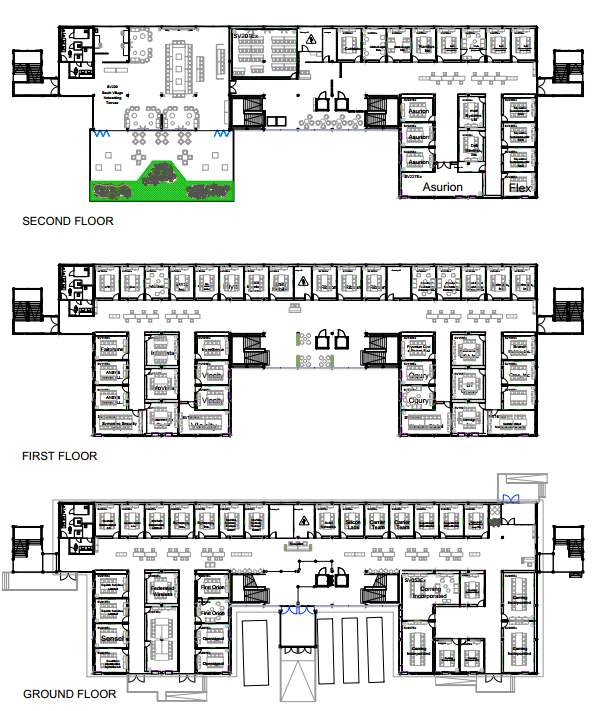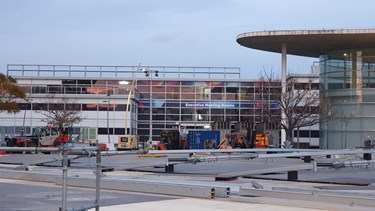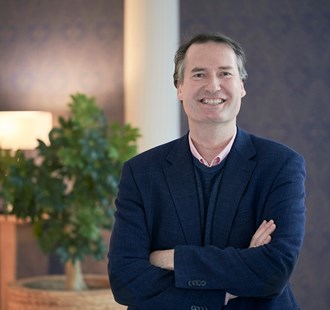Mobile World Congress 2020
The Mobile World Congress 2020 needed new VIP spaces to provide executive meeting rooms and a private space with WOW effect so we got to work with the design and execution of the project!
Client: GSMA
Innovation in the digital age
At the Mobile World Congress 2020, an event of global importance that takes place annually at the congress venue Fira Barcelona, new VIP rooms were needed to provide exclusive meeting spaces for more than 230 new and existing customers. In addition, a space with WOW factor was required, large enough to accommodate the board of directors, with easy access from the street and all necessary equipment and services.
New space requirements
MWC Barcelona is the most influential international event for the connectivity industry and is attended by global mobile operators, device manufacturers, technology providers, vendors and content owners. MWC Barcelona is the place to be seen, showcase innovative products and technologies and make remarkable connections with key decision-makers, creators and innovators in the industry.
For all these reasons, and due to the growing demand for attendance at the Mobile World Congress, it was necessary to create new meeting spaces within the existing venue located at the Fira de Barcelona. These temporary spaces had to guarantee the high standards of quality and security that Losberger De Boer has always provided to both GSMA and Fira Barcelona. To achieve this, the structures had to be fully integrated within the existing design of the public square temporarily provided by the Ajuntament de l'Hospitalet de Llobregat for this occasion.
Challenges and solutions
The request from our client was very demanding since a total of almost 350m2, 90 executive VIP rooms, a boardroom and a terrace were requested within the structure to be built for a total of 230 diverse clients, each with their particularities, requests and specific requirements of use, space distribution and decoration.
Given that the space for this structure was outside the Fira site, we had a very small space available for the construction, so we had to grow in height to accommodate the 90 rooms requested by the client in this reduced space.
As well as this, the period of use of the public space was limited and could not be exceeded during assembly or disassembly since, as it was for public use, it could not be occupied for longer than allowed. This required us to plan our operations in great detail.
Also, since it was a public space, the health and safety measures had to be even stricter, guaranteeing the maximum safety of the public and pedestrians in the surrounding areas during set-up, event development and dismantling.
Finally, a very important factor had to be taken into account: the construction was to be carried out on top of a subway tunnel, so there was a specific load limit that the pavement could withstand, of 2,000 kg per m2. This was a key conditioning factor when designing the project, not only because of the size of the structure but also because of the materials that had to be used, since they had to be as light as possible and the weight distribution that would be required in the flooring.
For this, we had the invaluable collaboration of the City Council of L'Hospitalet and the fire department, who carried out an exhaustive engineering and architectural study of the area. This collaboration ensured that everything was meticulously studied during construction.
The structure built consisted of 3 floors of about 120m2 per floor, 2 main access areas, 4 staircases to access the different floors and 2 elevators. On each floor, apart from the meeting rooms, there were also prefabricated toilets and catering areas for the meetings of different teams. The structure also had a terrace on the top floor adjacent to an open space, where every 4 hours was changed for a different use (meeting room for the GSMA Board Meeting, conference and lecture room, and chillout area). This structure had a glazed facade, which apart from having the terrace where you could enjoy the views, in the front this type of facade allowed the entry of natural light into the building.
It was extremely important to have the capacity of each floor and space controlled at all times for safety and health. In order to certify capacity control, a system of people counting cameras was installed at each access, elevator, interior and exterior stairways. The flow of people was continuously monitored by a specialized team.
Innovation: the key to success
To overcome these challenges and deliver a structure with all the technical, safety and quality requirements requested, we chose to implement a series of innovative solutions for this project.
We started by reducing modular engineering time by streamlining the assembly and disassembly methodology. Various techniques and materials were designed that could be prefabricated in advance and off-site, making the coordination of the different assembly teams simpler and more agile. One of the key examples was the structural assembly combined with the electrical installation as we built pre-wired walls with a clever design to be assembled and installed quickly, as well as allowing for reuse. This allowed time, cost and human error to be reduced considerably.
On the other hand, the operational logistics were exceptional. In any other type of project, materials are stored for construction as the assembly progresses, but in this case, given the limited space available, a just in-time delivery of materials was carried out. This technique consists of receiving only the materials needed for that specific day of assembly and installation, thus avoiding both the occupation of more space than we had available, as well as unnecessary movements of materials during assembly. Larger materials arrived at the space at the exact moment they were to be installed to avoid delays and logistical coordination that could be complicated.
Finally, and as a noteworthy innovation to be able to manage and respond in the most productive, fast and functional way to all customers and their requests, we worked from the beginning with agile technologies. This ensured fluid, constant and direct communication with the clients of each of the halls, with Fira, which is the intermediary and owner of the venue, and with our main client GSMA. This way we were able to ensure that all interested parties were informed of changes or new requests immediately and uniformly.
Ultimately, the requested structure with 90 VIP meeting rooms, the boardroom and the long-awaited terrace with a premium level of finish and every detail to meet the requests of each exhibitor was delivered on time and on form. Much to our regret and after having built 100% of the work, for COVID reasons the Mobile World Congress 2020 edition unfortunately never opened. However, given the modular design of the structure and its reusability principle, this structural solution has been built for other events such as the MDLBEAST music festival and the Saudi Arabian Grand Prix Formula 1, both held in Saudi Arabia.
Even so, we highlight the summary that Sandra Ripoll, the director of the event, made of the delivery:
"This is a key event in the technological panorama that has a huge international appeal, which means a great complexity both in the previous management and during the assembly. The solution offered by Losberger De Boer was the only viable proposal given the high number of executive rooms, the limited assembly space and the limited time to carry out the event".

"The solution offered by Losberger De Boer was the only viable proposal"
Sandra Ripoll, The Director of the event
Client Testimonial
"This is a key event in the technological panorama that has a huge international appeal, which means a great complexity both in the previous management and during the assembly. The solution offered by Losberger De Boer was the only viable proposal given the high number of executive rooms, the limited assembly space and the limited time to carry out the event".
Interested in this Event space solution?
Feel free to reach out to us for more information on owning or renting one of our structures.

Managing Director






